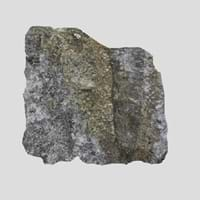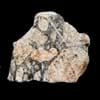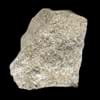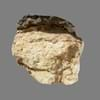Definition
Marl is an unconsolidated sedimentary rock consisting of clay and lime
Skarns are formed during regional or contact metamorphism and from a variety of metasomatic processes involving fluids of magmatic, metamorphic, and/or marine origin
Origin
Unknown
USA, Australia
Discoverer
Unknown
Tornebohm
Etymology
From Old French marle, from Late Latin marglia
From an old Swedish mining term originally used to describe a type of silicate gangue or waste rock.
Class
Sedimentary Rocks
Metamorphic Rocks
Sub-Class
Durable Rock, Soft Rock
Durable Rock, Hard Rock
Group
Not Applicable
Not Applicable
Other Categories
Fine Grained Rock, Opaque Rock
Fine Grained Rock, Opaque Rock
Texture
Earthy
Earthy, Mud-rich, Rough
Color
Beige, Brown, Green, Grey, White
Black, Brown, Green, Grey, White
Durability
Durable
Durable
Appearance
Rough and Dull
Dull
Interior Uses
Decorative Aggregates, Floor Tiles
Decorative Aggregates, Entryways, Interior Decoration
Exterior Uses
As Building Stone, Roof Tiles
As Building Stone, As Facing Stone, Garden Decoration, Paving Stone
Other Architectural Uses
Curbing
Curbing
Construction Industry
Cement Manufacture, Construction Aggregate, for Road Aggregate, Making natural cement, Raw material for the manufacture of mortar
As a Flux in the Production of Steel and Pig Iron, As a Sintering Agent in Steel Industry to process Iron Ore, As Dimension Stone, Gold and Silver production, Manufacture of Magnesium and Dolomite Refractories
Medical Industry
Not Available
Not Applicable
Antiquity Uses
Artifacts, Jewellery, Sculpture, Small Figurines
Artifacts, Monuments, Sculpture
Commercial Uses
Creating Artwork, Soil Conditioner
Creating Artwork, Gemstone, Jewelry, Metallurgical Flux, Source of Magnesia (MgO)
Types
Clay Marl ,Blue Marl, Red Marl, High Bank Marl, Shell Layer Marl, Under Shell Layer Marl, Sand Marl, Green Marl, Grey Marl and Clayey Marl
Endoskarns
Features
Generally rough to touch, Is one of the oldest rock, Splintery, Very fine grained rock
Host Rock for Lead, Zinc and Copper Deposits
Archaeological Significance
Monuments
Not Yet Used
Used
Famous Monuments
Not Applicable
Not Available
Famous Sculptures
Not Available
Not Available
Pictographs
Used
Not Used
Petroglyphs
Used
Not Used
Formation
Marl forms when very fine-grained clay particles are deposited in water which settles at the bottom of water bodies and are compacted by overlying sediment; the water squeezes out and hence forming Marl rock.
Due to change in environmental conditions, rocks are heated and pressurized deep inside the Earth's surface. Skarn is formed from the extreme heat caused by magma or by the intense collisions and friction of tectonic plates.
Mineral Content
Calcite, Clay, Dolomite, Gypsum, Micas, Pyrite, Quartz
Calcite, Enstatite, Epidote, Garnet, Magnetite, Pyroxene, Titanite
Compound Content
Aluminium Oxide, NaCl, CaO, Iron(III) Oxide, Silicon Dioxide
Au, CaO, Carbon Dioxide, Cu, Fe, MgO
Types of Metamorphism
Not Applicable
Burial Metamorphism, Cataclastic Metamorphism, Contact Metamorphism, Hydrothermal Metamorphism, Impact Metamorphism, Regional Metamorphism
Types of Weathering
Biological Weathering, Chemical Weathering
Not Applicable
Types of Erosion
Chemical Erosion, Coastal Erosion, Water Erosion, Wind Erosion
Not Applicable
Grain Size
Very fine-grained
Fine Grained
Fracture
Conchoidal
Irregular
Streak
White
Light to dark brown
Porosity
Highly Porous
Less Porous
Luster
Dull
Waxy and Dull
Cleavage
Not Available
Slaty
Specific Gravity
2.2-2.8
2.86
Transparency
Opaque
Opaque
Density
2.4-2.8 g/cm3
2.8-2.9 g/cm3
Specific Heat Capacity
Not Available
Resistance
Heat Resistant, Impact Resistant
Heat Resistant
Deposits in Eastern Continents
Asia
India, Pakistan, Russia
China, India, Russia, Saudi Arabia, South Korea, Sri Lanka
Africa
Ethiopia, Kenya, Morocco, South Africa
South Africa, Western Africa
Europe
Austria, France, Germany, Greece, Italy, Romania, Scotland, Spain, Switzerland
United Kingdom
Others
Not Available
Not Available
Deposits in Western Continents
South America
Colombia, Ecuador, Peru
Brazil, Colombia, Paraguay
Deposits in Oceania Continent
Australia
New South Wales, Victoria, Western Australia
Central Australia, Western Australia
Marl vs Skarn Characteristics
Though some rocks look identical, they have certain characteristics which distinguish them from others. Characteristics of rocks include texture, appearance, color, fracture, streak, hardness etc. Marl vs Skarn characteristics assist us to distinguish and recognize rocks. Also you can check about Properties of Marl and Properties of Skarn. Learn more about Marl vs Skarn in the next section. The interior uses of Marl include Decorative aggregates and Floor tiles whereas the interior uses of Skarn include Decorative aggregates, Entryways and Interior decoration. Due to some exceptional properties of Marl and Skarn, they have various applications in construction industry. The uses of Marl in construction industry include Cement manufacture, Construction aggregate, For road aggregate, Making natural cement, Raw material for the manufacture of mortar and that of Skarn include As a flux in the production of steel and pig iron, As a sintering agent in steel industry to process iron ore, As dimension stone, Gold and silver production, Manufacture of magnesium and dolomite refractories.
More about Marl and Skarn
Here you can know more about Marl and Skarn. The life cycle of a rock consists of formation of rock, composition of rock and transformation of rock. The composition of Marl and Skarn consists of mineral content and compound content. The mineral content of Marl includes Calcite, Clay, Dolomite, Gypsum, Micas, Pyrite, Quartz and mineral content of Skarn includes Calcite, Enstatite, Epidote, Garnet, Magnetite, Pyroxene, Titanite. You can also check out the list of all Sedimentary Rocks. When we have to compare Marl vs Skarn, the texture, color and appearance plays an important role in determining the type of rock. Marl is available in beige, brown, green, grey, white colors whereas, Skarn is available in black, brown, green, grey, white colors. Appearance of Marl is Rough and Dull and that of Skarn is Dull. Properties of rock is another aspect for Marl vs Skarn. The hardness of Marl is 2-3 and that of Skarn is 6.5. The types of Marl are Clay Marl ,Blue Marl, Red Marl, High Bank Marl, Shell Layer Marl, Under Shell Layer Marl, Sand Marl, Green Marl, Grey Marl and Clayey Marl whereas types of Skarn are Endoskarns. Streak of rock is the color of powder produced when it is dragged across an unweathered surface. The streak of Marl is white while that of Skarn is light to dark brown. The specific heat capacity of Marl is Not Available and that of Skarn is 0.92 kJ/Kg K. Depending on the properties like hardness, toughness, specific heat capacity, porosity etc., rocks are resistant to heat, wear, impact, etc.Marl is heat resistant, impact resistant whereas Skarn is heat resistant.





